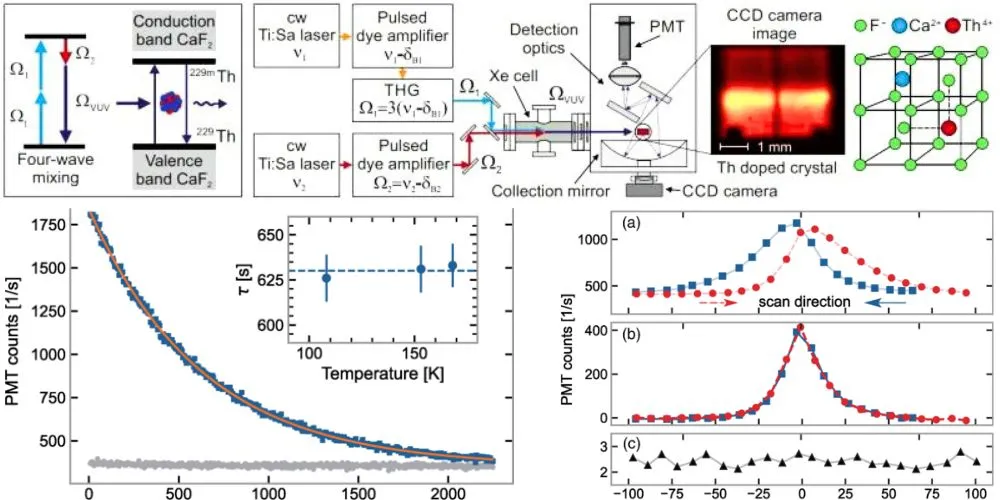Key Points:
- Scientists have made strides in developing a nuclear clock based on energy shifts within atomic nuclei, surpassing the precision of optical clocks.
- It involves inducing transitions in the nucleus of thorium-229 using an ultraviolet laser, with the frequency of light serving as the clock’s tick.
- Thorium-229’s unique energy state makes it a promising candidate for a super-stable clock, offering unprecedented accuracy.
- Nuclear clocks hold the potential to advance scientific exploration by enabling investigations into dark matter and fundamental physics.
Scientists have made substantial progress towards creating a revolutionary type of clock based on minute shifts in energy within an atomic nucleus. This achievement opens the door to the possibility of nuclear clocks surpassing the precision of current top timekeepers and optical clocks while offering greater resilience to disturbances.
A nuclear clock holds the potential to enable physicists to explore fundamental forces of nature in novel ways, unlocking avenues to investigate scenarios related to dark matter and fundamental physics previously inaccessible through conventional methods.
The breakthrough, achieved through collaboration between the Vienna University of Technology and Germany’s PTB, involved utilizing an ultraviolet laser to induce transitions in the nucleus of radioactive thorium-229, with the frequency of light absorbed and emitted by the nucleus serving as the clock’s tick. The research was published in Physical Review Letters on 29 April.
This development marks a significant milestone in a decades-long effort by scientific groups, culminating in identifying thorium-229 as a suitable candidate for a super-stable clock. The precise frequency measurement, achieved with a resolution 800 times better than previous attempts, sets the stage for constructing a nuclear clock that could be ten times more accurate than existing optical clocks.
The robustness of a nuclear clock against external perturbations, coupled with the potential for compactness and portability, presents promising prospects for various scientific applications. These clocks could significantly enhance scientific methods, such as probing Earth’s gravitational field and detecting changes in fundamental constants, including the strength of electromagnetic and strong nuclear forces.





